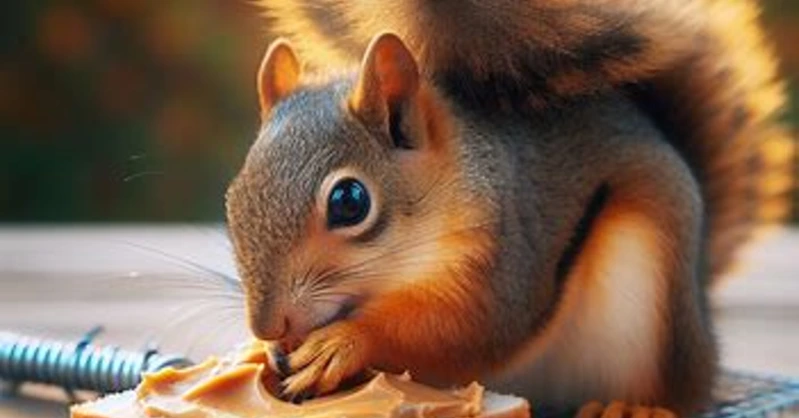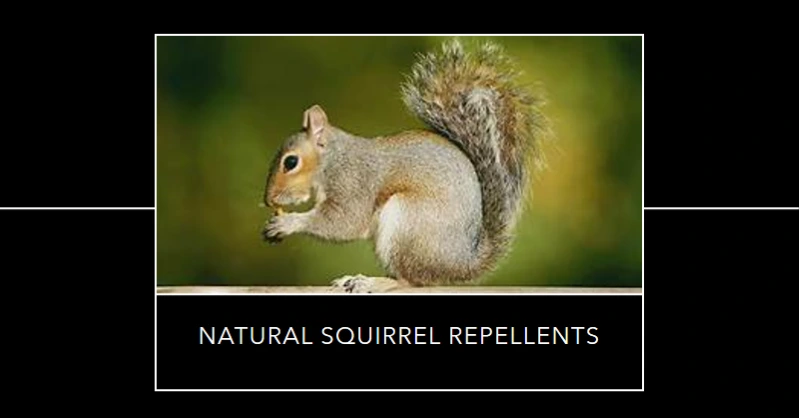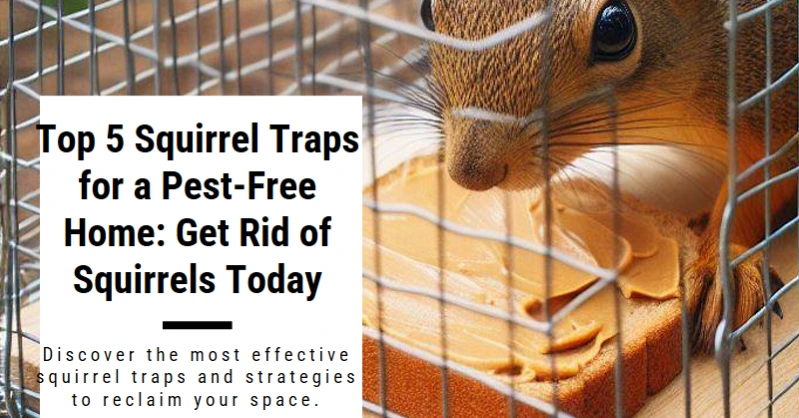Introduction
Squirrel traps have long been a topic of debate among homeowners facing pesky squirrel infestations. Many believe that dealing with squirrels is a simple matter of setting up a trap and catching them. However, in the world of pest control, it’s essential to understand the nuances of squirrel behavior and the various types of traps available.
Table of Contents
Understanding Squirrel Behavior
To effectively control squirrels, it’s crucial to first understand their behavior patterns. Squirrels are curious creatures, known for their agility and adaptability. They are particularly active during the daylight hours, foraging for food and building nests. While they may seem harmless, squirrels can cause significant damage to your property.
Squirrels are notorious for gnawing on electrical wires, damaging insulation, and raiding bird feeders. Their nesting habits can also pose a fire hazard when they build nests in attics or chimneys. Understanding these behaviors is essential because it helps you anticipate their actions and place traps strategically.
Types of Squirrel Traps
Now that we’ve gained some insight into squirrel behavior, let’s explore the different types of squirrel traps available. Each type has its advantages and disadvantages, making it crucial to choose the right one for your specific situation.
Live-Catch Traps:
- These traps are designed to capture squirrels alive, allowing you to release them away from your property. Live-catch traps are a humane option for those who want to relocate squirrels without harm.
Snap Traps:
- Snap traps are spring-loaded devices that instantly kill squirrels upon activation. They are efficient but may not be suitable if you prefer a non-lethal approach.
Electrocuting Traps:
- These traps deliver an electric shock to squirrels when triggered. They are quick and effective but may not be readily available for homeowners.
Glue Traps:
- Glue traps use adhesive to capture squirrels. While they are easy to use, they may not be the most humane option, as they can cause suffering to the trapped squirrel.
One-Way Exit Traps:
- These traps allow squirrels to exit your property but prevent re-entry. They are particularly useful for excluding squirrels from attics or crawl spaces.
- Choosing the right type of trap depends on your preferences and the severity of your squirrel problem.

Choosing the Right Squirrel Trap
In our journey to master squirrel traps, we now arrive at a critical juncture: selecting the right squirrel trap for your specific needs. While there are various types of traps available, choosing the appropriate one requires careful consideration of factors like the severity of your squirrel problem, your stance on humane trapping, and even the size of the trap.
Humane Squirrel Control
If you’re concerned about the welfare of these furry intruders, you may lean towards humane squirrel control methods. Live-catch traps are an excellent choice for those who want to capture squirrels without harming them. These traps allow you to release the captured squirrel at a location away from your property, ensuring their survival and well-being.
While humane trapping is a compassionate approach, it’s essential to remember that you may need to check these traps regularly to prevent undue stress or harm to the captured squirrel. Additionally, releasing squirrels far from your home is crucial to prevent their return.
Consider Trap Size
Another crucial factor to consider when choosing a squirrel trap is its size. Squirrels vary in size, and you want to ensure that the trap can accommodate the local squirrel population. Traps that are too small may not capture larger squirrels effectively, while oversized traps may not be efficient for smaller ones.
To determine the appropriate trap size, it’s helpful to observe the squirrels in your area. Take note of their size and select a trap that provides enough space without being excessively large. This ensures that you can catch squirrels of all sizes without any issues.
Balancing Humane Trapping and Effectiveness
Balancing humane trapping with effectiveness is a common dilemma. While live-catch traps are humane, they may not always be the most efficient choice, especially if you have a severe squirrel problem. Snap traps and electrocuting traps can be highly effective in eliminating squirrels quickly but are not considered humane.

Baiting Techniques for Squirrel Control
Welcome back to our journey of mastering squirrel traps! Now that you’ve selected the right trap for your needs, it’s time to delve into the art of baiting. Baiting is a crucial aspect of successful squirrel control, as it entices these agile creatures into your trap. Let’s explore some effective baiting techniques and strategies.
Understanding Squirrel Preferences
Before we dive into specific baiting methods, it’s essential to understand what squirrels find irresistible. Squirrels are notorious for their love of nuts, seeds, and grains. They are also attracted to fruits, vegetables, and birdseed. Knowing their preferences allows you to choose bait that will be most appealing to them.
When selecting bait, consider using some of the following options:
- Peanuts
- Sunflower seeds
- Corn
- Apples
- Pecans
- Peanut butter
Proper Placement of Bait
Once you’ve chosen your bait, the next step is to place it effectively within the trap. For live-catch traps, you’ll want to position the bait at the far end of the trap, opposite the entrance. This encourages the squirrel to venture further into the trap to reach the bait, increasing the chances of capture.
For lethal traps like snap traps or electrocuting traps, you’ll need to position the bait in a way that forces the squirrel to interact with the trigger mechanism. This typically involves placing the bait in a designated compartment or on a trigger plate.
Baiting Tips and Tricks
To increase your chances of success, here are some additional baiting tips and tricks:
Use Fresh Bait:
- Squirrels have a keen sense of smell. Fresh bait is more likely to attract them than stale or rancid bait.
Secure the Bait:
- Make sure the bait is securely attached or placed so that the squirrel cannot easily remove it without triggering the trap.
Camouflage the Trap:
- Squirrels are cautious animals. Conceal the trap with leaves, twigs, or other natural materials to make it appear less threatening.
Regularly Check and Refresh Bait:
- Squirrels may deplete the bait without triggering the trap. Check the trap regularly and replenish the bait as needed.
Incorporating these baiting techniques into your squirrel trapping strategy can significantly increase your chances of successful capture.

DIY Squirrel Trapping Solutions
Welcome back to our quest to master squirrel traps and conquer those pesky squirrel infestations. If you’re the hands-on type and prefer taking matters into your own hands, this section is for you. We’ll explore DIY squirrel trapping solutions that allow you to tackle squirrel problems effectively and efficiently.
Assess the Severity of the Problem
Before diving into DIY trapping, it’s essential to assess the severity of your squirrel problem. Determine how many squirrels are causing issues and identify the areas they frequent.
Gathering Your Tools and Supplies
Once you’ve assessed the situation, it’s time to gather the necessary tools and supplies. Here’s a basic list of what you’ll need:
- Squirrel traps (appropriate for your situation)
- Bait (nuts, seeds, fruits, or peanut butter)
- Gloves for handling traps and bait
- A safe and secluded release area (for live-catch traps)
- Disposal bags (for lethal traps)
- Camouflage materials (leaves, twigs, etc.)
Ensure that you have all these items on hand before you begin your DIY squirrel trapping efforts.
Trap Placement and Strategy
Effective trap placement is crucial to your success. Consider the following tips:
- Position traps along known squirrel pathways and near entry points.
- Conceal traps with natural materials to reduce their visibility.
- Use multiple traps if you have a severe infestation.
- Regularly check traps to remove captured squirrels promptly.
Regular Monitoring and Maintenance
To ensure the effectiveness of your DIY squirrel trapping efforts, monitor and maintain your traps consistently. Check traps daily to prevent captured squirrels from suffering or escaping. Refresh bait as needed to keep it enticing.
Relocation or Disposal
For live-catch traps, plan for the safe relocation of captured squirrels. Choose a location far from your property, and release the squirrels carefully. For lethal traps, follow local regulations for disposal and ensure a humane and ethical approach.
By following these DIY squirrel trapping solutions and strategies, you can take control of your squirrel problem and protect your property effectively.
Squirrel Exclusion Methods
Now, we’ll explore squirrel exclusion methods – proactive strategies to prevent these furry intruders from returning to your property.
Inspect and Seal Entry Points
To keep squirrels out, start by conducting a thorough inspection of your property. Look for any openings or gaps in your home’s exterior, roof, or walls that squirrels might use to enter. Common entry points include gaps around vents, chimneys, and damaged roofing.
Once identified, seal these entry points with sturdy materials like wire mesh, steel wool, or caulk. Squirrels are persistent, so make sure your repairs are secure and durable.
Install Squirrel-Proof Barriers
Another effective squirrel exclusion method is installing squirrel-proof barriers. These barriers can deter squirrels from accessing specific areas of your property. Here are a few options:
- Squirrel Baffles:
Install baffles on bird feeders and poles to prevent squirrels from accessing birdseed.
- Mesh Netting:
Use mesh netting to protect garden beds and fruit trees from squirrel raids.
- Chimney Caps:
Install chimney caps to keep squirrels out of your chimney.
- Wire Fencing:
Use wire fencing to enclose areas like gardens and flower beds.
Trim Overhanging Branches
Squirrels are excellent climbers and can access your home via overhanging tree branches. To prevent this, trim branches that are within a squirrel’s jumping distance of your home. This simple step can deter squirrels from reaching your roof and attic.
Use Squirrel-Repellent Products
There are various squirrel-repellent products available that emit odors or sounds that deter squirrels. These products can be placed strategically around your property to create an unpleasant environment for squirrels.
While these methods can be effective, it’s essential to note that their success may vary, and some squirrels may become accustomed to them over time.
Maintain a Clean Yard
Squirrels are attracted to food sources, so maintaining a clean yard can help reduce their presence. Keep bird feeders clean and secure, pick up fallen fruits and nuts, and store pet food indoors. By removing potential food sources, you make your property less appealing to squirrels.

Natural Squirrel Repellents
Welcome to the next phase of our quest to master squirrel traps and conquer those persistent squirrel infestations. In this section, we’ll explore natural squirrel repellents – environmentally friendly solutions to deter squirrels from invading your space.
Understanding Natural Squirrel Repellents
Natural squirrel repellents are non-toxic, eco-friendly alternatives to chemical deterrents. They work by emitting odors or creating conditions that squirrels find unpleasant, encouraging them to stay away. Here are some effective natural squirrel repellents:
Hot Pepper Spray
Hot pepper spray is a potent natural repellent for squirrels. It’s made by mixing water and hot pepper flakes or hot sauce. The capsaicin in peppers creates an unpleasant sensation for squirrels, discouraging them from visiting treated areas.
Mothballs
Mothballs emit a strong odor that can deter squirrels. Place mothballs strategically in areas frequented by squirrels, such as attics or crawl spaces. Keep in mind that mothballs should be used with caution and in well-ventilated areas due to their toxicity to humans and pets.
Predator Urine
Predator urine, such as that of foxes or coyotes, can mimic the presence of a natural predator to squirrels. These products are available in liquid or granule form and can be strategically placed around your property.
Scented Repellent Plants
Certain plants and herbs, like mint, marigolds, and daffodils, emit scents that squirrels find unappealing. Planting these around your garden or near vulnerable areas can act as a natural deterrent.
Ultrasonic Devices
Ultrasonic devices emit high-frequency sound waves that are irritating to squirrels but generally inaudible to humans. These devices can be placed in gardens or near entry points to deter squirrels.
Conclusion: Mastering Squirrel Traps for Pest Control
Congratulations on completing our comprehensive guide to mastering squirrel traps and effectively controlling squirrel infestations! In this final section, we’ll summarize key takeaways and provide you with a quick reference for squirrel control.
Key Takeaways
Understanding Squirrel Behavior:
- Squirrels are active during daylight hours, and they can cause significant damage to your property, including gnawing on wires and raiding bird feeders.
Types of Squirrel Traps:
- There are various types of traps available, including live-catch traps, snap traps, electrocuting traps, glue traps, and one-way exit traps.
Choosing the Right Squirrel Trap:
- Select the trap that aligns with your values, whether it’s humane trapping or quick and effective elimination. Ensure the trap size matches the local squirrel population.
Baiting Techniques:
- Use enticing bait, such as peanuts, sunflower seeds, or peanut butter, to lure squirrels into traps. Proper bait placement is critical for success.
DIY Squirrel Trapping:
- Assess the severity of the infestation, gather the necessary tools and supplies, and strategically place traps. Regular monitoring and maintenance are essential.
Squirrel Exclusion Methods:
- Inspect and seal entry points, install squirrel-proof barriers, trim overhanging branches, use squirrel-repellent products, and maintain a clean yard to prevent squirrel access.
Natural Squirrel Repellents:
- Utilize eco-friendly repellents like hot pepper spray, mothballs, predator urine, scented repellent plants, and ultrasonic devices to deter squirrels.
Squirrel Control Quick Reference
- Assess the situation:
Identify the scale of the squirrel problem.
- Choose the right trap:
Select the trap type based on your preferences and the squirrel population.
- Bait effectively:
Use enticing bait and proper placement.
- DIY trapping:
Assess, gather supplies, place traps, monitor, and maintain.
- Prevent reinfestation:
Seal entry points, use barriers, trim branches, and employ natural repellents.
We hope this guide has empowered you with the knowledge and skills to effectively address squirrel infestations on your property.
For more information please visit insightfullhome.com.
FAQs about squirrel traps:
Question 1: What are squirrel traps, and how do they work?
Squirrel traps are devices designed to capture squirrels. They typically use bait to lure squirrels into a trap, where they are confined until you release or relocate them.
Question 2: Are squirrel traps humane?
Humane squirrel traps are designed to capture squirrels without harming them. Live-catch traps are considered humane because they allow for the safe capture and release of squirrels.
Question 3: What are the common types of squirrel traps?
Common types of squirrel traps include live-catch traps, snap traps, electrocuting traps, glue traps, and one-way exit traps. Each has its own method of capturing squirrels.
Question 4: What is the best bait for squirrel traps?
The best baits for squirrel traps include peanuts, sunflower seeds, peanut butter, and fruits like apples. Squirrels are attracted to these foods.
Question 5: Where should I place squirrel traps for the best results?
Place squirrel traps near areas with squirrel activity, such as entry points to your home, attic, or near bird feeders that squirrels frequent.
Question 6: How often should I check squirrel traps?
Check squirrel traps frequently, ideally every few hours. This prevents squirrels from experiencing stress or harm due to extended confinement.
Question 7: What should I do if I catch a squirrel in a trap?
If you catch a squirrel, handle it carefully and wear gloves. Release it in a safe location away from your property, ensuring it has access to food and shelter.
Question 8: Are there laws or regulations regarding squirrel trapping?
Laws and regulations related to squirrel trapping vary by location. Check with your local wildlife authorities or animal control agencies to understand the rules in your area.
Question 9: Can I use squirrel traps to control other pests, like rats or mice?
Squirrel traps are designed for squirrels and may not be effective for other pests. It’s best to use traps specifically designed for the target pest.
Question 10: Are there alternatives to trapping squirrels?
Yes, alternatives to trapping squirrels include using natural repellents, squirrel exclusion methods (sealing entry points), and seeking professional pest control services for severe infestations.
We hope these FAQs about squirrel traps helps you.





Pingback: Top 5 Squirrel Traps: Get Rid of Squirrels Today – insightfullhome.com
Your article helped me a lot, is there any more related content? Thanks!
Of course! I’m thrilled to hear that my article was helpful to you. It’s always great to know that my work is making a positive impact. As for more related content, I have plenty! Whether you’re interested in delving deeper into the topic we discussed or exploring related subjects, I’ve got you covered. Feel free to let me know what specific areas you’re interested in, and I’ll be more than happy to point you in the right direction. Thanks for reaching out, and I’m glad I could be of assistance!